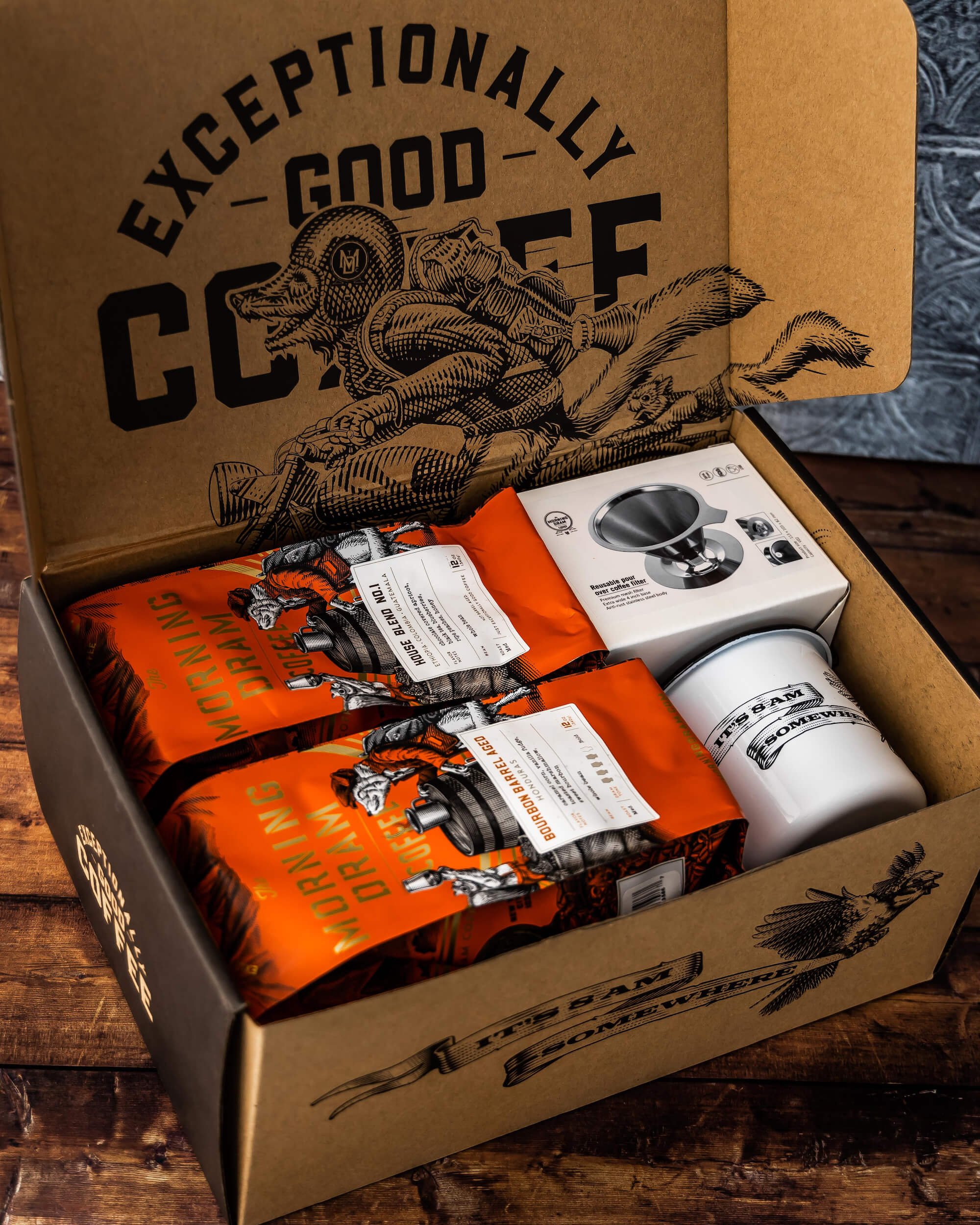The Alcohol Professor

How Tommy Tardie’s The Morning Dram Brings A Welcome Whiff of Whiskey to Your Coffee Cup
Tommy Tardie is a spirits guy. But he’s the ideal person to elevate the emerging coffee trend of barrel aging green coffee because his relationship to spirits is an aesthetic one. The owner of New York City’s The Flatiron Room restaurant and bar (which was named "2021 Best Bar in America" by Whisky Magazine), as well as the highly regarded Fine & Rare, Tardie, is, as many spirits devotees, consumed with choosing just the right whiskey for specific occasions, food pairings, and personal preferences. His non-judgmental, but highly opinionated, approach to the genre has opened up a world of exploration for his restaurant customers, who are presented with a Whiskey Bible upon being seated — a tome that lists more than 1,000 bottles.
When Coffee Beans Met A Bourbon Barrel
Tardie has always loved coffee, too, but the concept of The Morning Dram came more by way of necessity than his established business plan. In the early months of the COVID-19 pandemic, restaurants were closed, but people still needed their coffee. He says, “As a distraction from the status of the hospitality scene, I thought it would be interesting to combine two things I really love: coffee and spirits. I happened to have some bourbon casks from a recent barrel pick, and sourcing some green coffee took just a few clicks online. With the beans and the barrel on hand, I purchased a small roaster, and the experiments began. The coffee tasted good, so I decided to pursue it.”
When I opened the bags to sample two of The Morning Dram barrel-aged coffees, the immediate whiff of whiskey reminded me of the fascist-era Italian tradition of caffè corretto, in which grappa is unceremoniously splashed in an espresso, more to cover up the bitterness of the Robusta-heavy coffee blend than to catch a morning buzz. But while The Morning Dram coffees are not remotely subtle, they contain no alcohol; the green (unroasted) coffees are aged in barrels that once held fine spirits, and these aromas and flavors infuse the green coffees. When roasted, these alcohol and barrel notes merge with the coffees’ own fruit, nut, chocolate, and other impulses to create a new beverage profile. Tardie’s concept was to create a coffee for spirits drinkers, one that would elevate the morning coffee ritual by way of familiar aromas and flavors from bourbon and rye.

One of The Morning Dram gift sets
Tasting Notes
I brewed both coffees as pour-overs using the Hario v60 method, and I was surprised at their sensory distinctiveness. The Bourbon Barrel-Aged Honduras, the aromatically sweeter of the two, is richly chocolaty, with supporting notes of candied walnuts, vanilla flower, and the bourbon that previously shared the coffee’s aging vessel. A hint of smokiness that comes from the toast on the barrel (rather than the roasting of the coffee) adds depth and nuance.
The Rye Barrel-Aged Colombia and Mexico blend have leading notes of candied violet, baking spices, and a narcissus-like floral tone. You can definitely detect the influence of the rye barrel here with subtle spice notes on the nose and in the cup, but it could easily be mistaken for a natural-processed (sun-dried in the whole fruit) coffee, which is intentionally fruit-forward and, sometimes, even naturally ferment-y, as opposed to a barrel overlay on washed-process coffees (which it is).

The Morning Dram's rye barrel-aged coffee blend
The Barrel Aged Coffee Trend
From a coffee industry perspective, as roasters try to distinguish their brands in various ways, barrel-aged coffees are a trend that seems to be sticking. But many are made by shortcut methods that don’t consider the quality or sensory compatibility of the barrel and green coffee pairing, which is part art and part science. Tardie says, “I want the flavors to work in harmony, not to overpower each other. Every barrel is unique and requires frequent test roasts to determine the perfect time to pull them. The freshness of the barrel plays a significant role in how quickly the flavors are imparted into the beans.”
And unfortunately, some roasters use additives or flavorings to boost the profiles they’re looking for and to speed the process. But Tardie’s coffees are more thoughtful — he looks for coffees that complement the individual barrel tones, coffees that can stand solidly on their own. And each bag of coffee indicates a “dram tone” to suggest how much of the whiskey influence comes through in the final product.
Tardie doesn’t add dairy or sugar to his morning coffee, and I also recommend that you drink it black. The coffee itself, combined with the barrel influence, is naturally sweet, and additives muddy the clear aromas and flavors that each element contributes. (I tried the bourbon barrel-aged version with milk and found that it veered toward White Russian, not a cocktail I would ever choose to drink, despite my adoration of Jeff Bridges.)
If this coffee trend continues, look to quality-minded folks like Tardie to figure out the good stuff through trial and error, by knowing both whiskey and coffee — and how they play best together.
Follow @themorningdram on Instagram, and buy barrel-aged coffees online at The Morning Dram or in person at The Flatiron Room or Fine & Rare.

